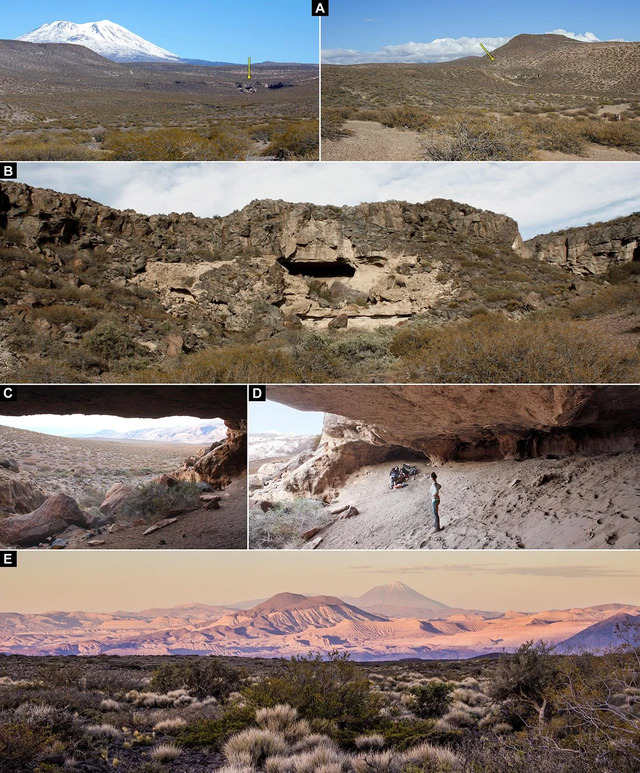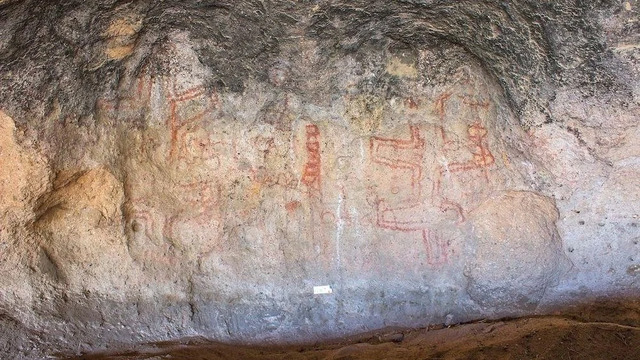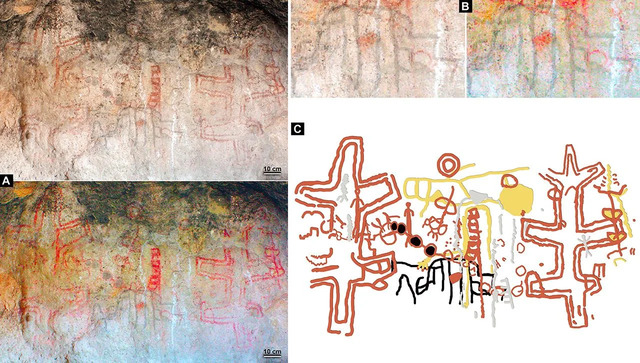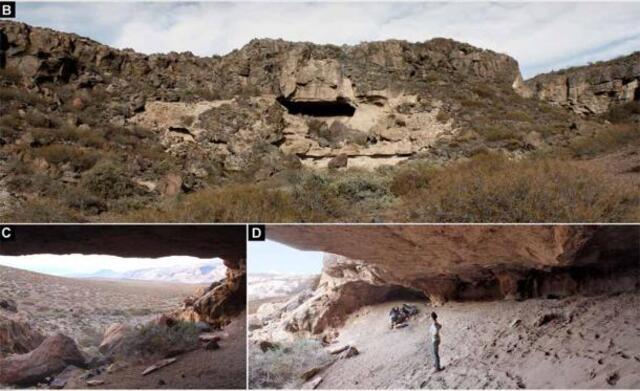In Patagonia’s rugged landscape, a recent discovery at the Cueva Huenul 1 cave has unveiled ancient rock art that dates back an astonishing 8,200 years. Spanning over 100 human generations, these artworks, meticulously analyzed by archaeologists, rewrite the timeline of artistic expression in South America. More than just images, these artifacts reveal a complex web of communication, culture, and resilience from a time when survival demanded innovation.
Discovery of Cueva Huenul 1
Nestled in Argentina’s Monte Desert, Cueva Huenul 1 houses one of the oldest known examples of pigment-based rock art in South America. The discovery was spearheaded by Guadalupe Romero Villanueva and an international team from CONICET and INAPL. The site contains depictions of humans, animals, and abstract designs, preserved in the cave’s sheltered environment. Unearthed through painstaking excavation and analysis, this artwork stands as a testament to the ingenuity of ancient cultures.

The drawings offer a rare glimpse into the lives of the cave’s early inhabitants. Unlike other sites of this period, the artwork in Cueva Huenul 1 provides direct evidence of a sustained cultural tradition that persisted for thousands of years. Radiocarbon dating of pigment samples confirms that these designs are among the oldest of their kind in the region.
Radiocarbon Dating and Its Impact
Using advanced radiocarbon dating techniques, researchers determined the pigments’ age, with some dating as far back as 8,200 years. This finding positions Cueva Huenul 1 as the oldest radiocarbon-dated pigment-based rock art site in South America, surpassing earlier estimates by millennia. As Ramiro Barberena, an archaeologist involved in the study, pointed out, this discovery pushes back the boundaries of artistic expression in the region, offering a rare opportunity to explore the social and cultural evolution of ancient Patagonia.
The meticulous dating process also sheds light on the continuity of artistic practices over centuries. The pigment samples reveal a consistent use of specific materials, suggesting that the techniques and traditions were passed down through generations, forming an integral part of the community’s identity.

Artistic and Cultural Significance
The rock art at Cueva Huenul 1 goes beyond simple decoration. Archaeologists believe it served as a medium for communication, storytelling, and preserving cultural memory. One particularly intriguing motif, a comb-like design, may have been used to document collective experiences or oral traditions during times of environmental stress. These artworks likely played a pivotal role in uniting communities, acting as visual records of shared struggles and triumphs.
The diversity of images—ranging from human figures to abstract designs—suggests a dynamic and adaptive culture. While the exact meaning of each symbol remains uncertain, researchers theorize that they held spiritual or ceremonial significance, perhaps acting as a bridge between generations and reinforcing social cohesion during challenging periods.

Environmental and Historical Context
The Monte Desert, where Cueva Huenul 1 is located, presented both opportunities and challenges for its ancient inhabitants. Harsh environmental conditions, including extreme aridity, required innovative strategies for survival. The artwork’s creation during a period of demographic stasis highlights the adaptive ingenuity of these early societies.
The cave likely served as a central hub for cultural exchange and ritual activity. Its strategic location within the volcanic landscape of northwestern Patagonia provided natural protection, preserving the artwork for millennia. Researchers suggest that the art reflects a period of heightened social interaction and cooperation among semi-nomadic groups, driven by the need to adapt to environmental changes.


Broader Implications for Archaeology
The discovery of Cueva Huenul 1 challenges traditional narratives about the timeline and complexity of early South American societies. It underscores the importance of rock art as a valuable archaeological resource, offering insights into human resilience and creativity. The findings align with other recent discoveries of petroglyphs in Europe and the Americas, highlighting the universal human desire to leave a mark on the world.
Moreover, the study emphasizes the need for preserving such sites in the face of modern threats like climate change and urbanization. By analyzing ancient art, researchers can uncover patterns of human adaptation and innovation that remain relevant today.
Conclusion
The ancient rock art of Cueva Huenul 1 is more than just a window into the past—it is a testament to the enduring power of human expression. Spanning 8,200 years and 100 generations, these images reveal a sophisticated culture that thrived despite environmental challenges. As researchers continue to study this remarkable site, it promises to deepen our understanding of human history and the profound connections between art, communication, and survival.
